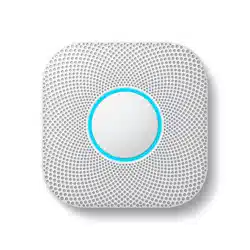Loading ...
Loading ...
Loading ...

23
WHERE NOT TO INSTALL YOUR CO ALARMS
• Keep carbon monoxide alarm at least 5 ft (1.5 m)
away from any cooking appliance including
stovetop, oven, microwave, etc.
• This alarm should not be installed in locations
where the normal ambient temperature is
below 40°F (4.4°C) or exceeds 100°F (37.8°C).
EXAMPLES OF WHEN YOUR SMOKE ALARM
MAY NOT BE EFFECTIVE
Your alarm may not be effective in protecting
against fire in certain cases:
• Smoking in bed
• Leaving children unsupervised
• Cleaning with flammable liquids, like gasoline.
• When someone’s clothes have caught on fire
• Fires where the smoke is prevented from
reaching the alarm due to a closed door or
other obstruction
• Incendiary fires where the fire grows so rapidly
that an occupant can’t get out, evenwith
alarms in proper locations
homes, for example – it is recommended
a smoke alarm to be placed as far from
these fuel-burning sources as possible. The
placement recommendations are intended
to keep a smoke detector at a reasonable
distance from a fuel-burning source, reducing
“unwanted” alarms. Unwanted alarms can
occur if a smoke alarm is placed directly next
to a fuel-burning source. Ventilate these areas
as much as possible.
• In air streams near kitchens. Air currents
can draw cooking smoke into the sensor of a
smoke alarm near the kitchen.
• In very damp, humid or steamy areas, or
directly near bathrooms with showers. Keep
a smoke alarm at least 10 feet (3 meters) away
from showers, saunas, dishwashers, etc.
• Where temperatures are regularly below
40˚F (4˚C) or above 100˚ F (38˚C) including
unheated buildings, outdoor rooms, porches,
or unfinished attics or basements.
• In very dusty, dirty, or greasy areas. Do not
install a smoke alarm directly over the stove or
range. Clean a laundry room unit frequently to
keep it free of dust or lint.
• Near fresh air vents, ceiling fans, or in very drafty
areas. Drafts can blow smoke away from a smoke
alarm, preventing it from reaching the sensor.
• In insect infested areas. Insects can
clog openings to the sensor and cause
unwanted alarms.
• Less than 12 inches (30.48 cm) away from
fluorescent lights. Electrical “noise” can
interfere with the sensor.
• In “dead air” spaces. “Dead air” spaces may
prevent smoke from reaching a smoke alarm.
Page: 23
Loading ...
Loading ...
Loading ...
